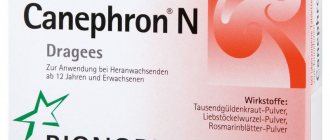Why do you need compression stockings during childbirth?
Compression stockings for childbirth, which have a therapeutic effect, have a specific list of indications. Phlebologists (specialists involved in the treatment of varicose veins) prescribe them for: 1) complaints of swelling of the legs, especially at the end of the day; 2) frequent feelings of fatigue or pain in the lower extremities; 3) varicose veins; 4) the presence of spider veins on the legs; 5) chronic venous insufficiency; 6) thrombosis; 7) frequent cramps in the calf muscles; venous eczema and dermatitis.
Phlebologists (specialists involved in the treatment of varicose veins) prescribe them for: 1) complaints of swelling of the legs, especially at the end of the day; 2) frequent feelings of fatigue or pain in the lower extremities; 3) varicose veins; 4) the presence of spider veins on the legs; 5) chronic venous insufficiency; 6) thrombosis; 7) frequent cramps in the calf muscles; venous eczema and dermatitis.
If there are any prerequisites for the presence of the listed symptoms or the development of the disease, the pregnant woman is simply obliged to purchase medical stockings for childbirth. They make it possible to: - prevent varicose veins during labor; — improve blood circulation, which reduces the likelihood of blood clots; - reduce the likelihood of swelling of the extremities by increasing the ability of blood vessels to cope with extracellular fluid; — improve the transport of oxygen and nutrients to all tissues of the body.
What to choose
Compression garments for pregnant women are made from various materials and are divided into classes:
- The first is that the stocking creates compression of no more than 23 mm. Hg Art. It is recommended to wear for dilated veins, as well as pain in the legs and severe fatigue.
- The second implies pressure on the body within 33 mm. Hg Art. Prescribed to pregnant women for the prevention of thrombophlebitis during gestation and at the time of childbirth.
- The third class of underwear creates compression up to 45 mm. Hg Art. Such tight tights or compression stockings are prescribed by a phlebologist for vein problems, which are accompanied by a characteristic trophic disorder.
- The fourth - with high blood pressure (50 mm Hg). Worn when lymph flow is disrupted and to localize severe swelling.
Not all women are recommended to wear orthopedic clothing of this type, but before purchasing them it is better to study the indications:
- constant leg fatigue;
- swelling;
- pain and heaviness;
- venous insufficiency;
- thrombophlebitis;
- “stars” on the body.
If at least one of the problems presented is present, then wearing compression stockings during pregnancy is simply necessary.
Contraindications should also be taken into account:
- ischemia;
- diabetes;
- skin diseases;
- atherosclerosis.
Remember! The prescription of any compression garments during pregnancy is carried out only by a professional doctor.
Compression class and its role when choosing stockings for childbirth
Many women ask the question: “How to choose compression stockings for childbirth and while pregnant?” When purchasing a product, it is not enough to have information regarding only the size; you should also know about the degree of compression that is suitable for you. This indicator indicates the intensity of the effect of stockings on normalizing blood flow. A specialist, a phlebologist, can determine what degree of compression is necessary in each specific case. There are 3 of them in total:
1. In the absence of significant problems with the functioning of blood vessels, pregnant women are prescribed 0 or 1 degree of compression. As a preventive measure for the development of varicose veins, as a rule, wearing medical stockings is recommended for women who lead a sedentary lifestyle or, on the contrary, if they spend most of the day on their feet. A less significant degree of compression allows pregnant women to wear the product after childbirth.
2. The presence of venous insufficiency or varicose veins is a reason to prescribe 2nd degree compression stockings. They are also prescribed for leg injuries, presented in the form of muscle damage, during pregnancy.
3. The 3rd degree of compression is relevant for pregnant women who have a history of surgery in the leg area or a trophic complication of varicose veins.
A separate type includes elastic stockings for childbirth, in which the compression is distributed evenly throughout the entire cut of the product. In addition, their distinctive feature is the open toe, which allows the gynecologist to determine the correctness of blood circulation by the appearance of the fingers.
Anti-embolic stockings for childbirth are prescribed if it is necessary to treat serious pathologies of the venous system during pregnancy or after a difficult course of delivery. They can be worn for several days without taking them off even during hygiene procedures in the shower.
Rules of use and care
Compression knitwear requires careful and careful care, since careless handling can ruin its structure, stretch the elastic fibers and destroy its healing properties.
Since therapeutic underwear must be worn every day, it quickly becomes dirty and needs to be washed daily. It is important to follow the washing rules so as not to spoil it:
- Do not use too high a water temperature;
- you need to protect your laundry from severe deformation - friction and spin;
- Before washing, you must remove any jewelry from your hands, as they can damage the fabric.
You should choose special products for delicate washing:
- liquid soap;
- powder or gel for baby clothes;
- powder or gel for delicate fabrics, chlorine-free.
It is not advisable to use:
- washing powder - undissolved grains of powder can get between the threads of knitwear and disrupt its structure;
- laundry soap - fatty acids in its composition have an aggressive effect on knitwear.
Photo gallery: products for washing compression garments
Detergents for washing delicate fabrics do not contain chlorine or aggressive substances
Detergents for washing children's clothes act thoroughly, but carefully
A special detergent for washing compression garments is designed taking into account all its features.
For therapeutic knitwear, hand washing is recommended at a temperature not exceeding 40°C. This is a more gentle cleaning option compared to washing in a washing machine. Correct washing order:
- dilute the detergent in warm water;
- soak the laundry for 10–15 minutes;
- wash it gently without applying too much pressure and/or friction;
- rinse in clean water 2-3 times;
- It is prohibited to use bleaches, rinse aids, fabric softeners and other additives.
When washing by machine, if permitted for a particular item of laundry, you should set the “hand wash” or “delicate wash” mode. In this mode, the water does not heat above the permitted temperature. In this case, the spin must be turned off, since spinning, even at low speeds, breaks the structure of the therapeutic knitwear. It is also not recommended to wash compression garments with other clothing.
Stockings should be dried in a well-ventilated area, away from heaters and direct sunlight. To dry, they need to be laid out on a horizontal surface on a fabric that absorbs moisture well. Hanging clothes to dry is prohibited.
When washing medical knitwear, the chemical and physical impact on it should be minimal
Good compression hosiery is not cheap, so women are often worried about whether they can buy them second-hand or borrow them from friends. It is important to remember that the therapeutic and preventive effect of underwear depends on its condition, the precisely selected size and compression class. If the last two points are quite easy to comply with, because they are indicated on the packaging, then making sure that the knitwear was cared for in compliance with all the rules is more difficult. Compression stockings are a rather capricious thing and easily become unusable, which is difficult to judge by their appearance. Therefore, you should buy or take stockings that have already been used by someone only if you are firmly convinced that they have been carefully looked after. The length of time the knitwear was worn by the previous owner is also important, because stockings from some companies lose their compression properties after just a few months of use.
When can I take it off after childbirth?
The length of time you need to wear compression stockings after childbirth depends on two factors:
- method of delivery;
- condition of a woman’s veins before and after childbirth.
If the child was born naturally, and if the young mother does not have varicose veins, increased blood clotting or cardiovascular problems, then it is enough to wear stockings for 3-7 days.
After a cesarean section, this period increases and is 2–3 weeks, while they are worn for the first day without taking them off. This happens because even after the end of the operation, components of anesthesia that have a vasodilating effect remain in the mother’s blood.
If a woman has been diagnosed with vein problems, then the time she wears stockings after childbirth increases. The exact period during which it is advisable to wear stockings during the day (since it is advisable to remove them at night) should be told by the phlebologist observing the patient.
Which company is better?
You can purchase compression hosiery in many pharmacies or specialized online stores. Many manufacturers sell these products. Whatever company you prefer, the stockings will have a healing effect. The only difference is in the service life of the product, design and cost.
Stockings for childbirth "Venotex"
The American manufacturer offers compression underwear with an average degree of wear resistance. Prophylactic stockings can be purchased, on average, up to 700 rubles; the 3rd degree of effectiveness will cost more, their cost varies from 1,600 rubles.
Stockings for childbirth “Mediven medi”
German quality requires high costs, however, according to reviews from users of stockings from this manufacturer, the product is comfortable during use, especially if you purchase a special device for wearing them. The cost of the lowest compression level starts at 1300 rubles.
Stockings for childbirth "Sigvaris"
Compression stockings from a Swiss manufacturer have the highest degree of wear resistance. But for a long comfortable service life and quality you will have to pay from 2,500 rubles to 5,000 rubles.
Stockings for childbirth "Relaxsan"
Products from the Italian manufacturer attract pregnant women with their low cost. Compression stockings of the 3rd degree can be bought for 1000-1200 rubles. However, consumers express dissatisfaction regarding the presence of discomfort during the use of knitwear. In addition, the period of wearing stockings does not exceed two months.
Stockings for childbirth "Ergoforma"
Experienced women answer the question: “Which compression stockings are best for childbirth?” recommend this manufacturer. Apparently, they are attracted by the price-quality ratio. The company periodically tests its own products and confirms their degree of effectiveness. The service life reaches 8 months, and the cost of anti-embolic stockings does not exceed 1,300 rubles.
Putting on stockings correctly
Medical stockings for childbirth are put on with effort, not like ordinary hosiery. If you can’t put them on yourself, ask the medical staff or family for help.
We collect the upper part of the stocking “into an accordion”, carefully put it on the foot (first on the toes, then on the heel), slowly straighten it, pulling slightly, up the leg. We do not twist the stocking.
Attention: elastic bandages do not guarantee accurate pressure distribution along the leg. The correctness of their application depends entirely on the skills and abilities of the medical staff. Only in anti-embolic knitwear the pressure is already calculated and dosed.
During natural childbirth, we put on stockings during the first contractions. You can do it earlier if you are afraid that you will not be able to do this between contractions.
For an upcoming caesarean section - immediately before the operation, unless the doctor has prescribed a different regime for wearing compression stockings.
Childbirth and the first 7 days after are considered a dangerous time for the occurrence of thromboembolic complications. Therefore, doctors recommend wearing knitwear during the postpartum period. During surgical childbirth and in women in labor in risk groups, stockings are used around the clock.
The further regimen and timing of wearing compression products is determined by the attending physician.
How to choose stocking size?
In order to determine the required size of stockings for childbirth, before ordering the product or going to the pharmacy, you should measure the following parameters: 1. The circumference of the lower part of the lower leg, above the ankle. 2. Leg circumference under the knee joint. 3. Thigh circumference - performed at a distance of 25 cm from the knee. If a pregnant woman’s height is over 180 cm, the meter moves another 5 cm higher. 4. Leg length from the measured hip point to the foot. All measurements should be taken in the morning, before swelling appears.
How to wear stockings for childbirth?
Since some manufacturers make stockings with a high degree of wear resistance, you can wear the same jersey to the delivery room that you wore during pregnancy. Many people are interested in the answer to the question: “Do I need to wash stockings before giving birth?”
The main condition for successful childbirth is sterility. Therefore, all clothes worn by a woman in labor must be clean, including stockings. They should be washed by hand using special products or regular baby soap.
The product should be put on in the morning, without getting out of bed. As in the case of measurements, it will be easier to cope with the task before swelling appears. If there is a cutout for the toes, it is best to initially wear a nylon sock, which will ensure easy putting on of the compression stockings. After it is distributed along the entire length of the leg, it can be removed.
Standard stockings can initially be gathered into an accordion, and then carefully inserted inside the foot.
Will the same stockings that were worn during pregnancy work?
There are 4 classes of compression garments. The classification depends on the pressure that the gaiters exert on the veins. Determining the required class is the doctor’s task . If during childbirth the condition of the legs is no different from what was observed during pregnancy, then you can safely use the same stockings. The main thing is to thoroughly sterilize your knee socks before arriving at the hospital. It will be enough to wash them.
Important! Washing should be gentle using gentle powders. You need to rinse your laundry well. Do not wring out the products so as not to damage the fiber structure.










